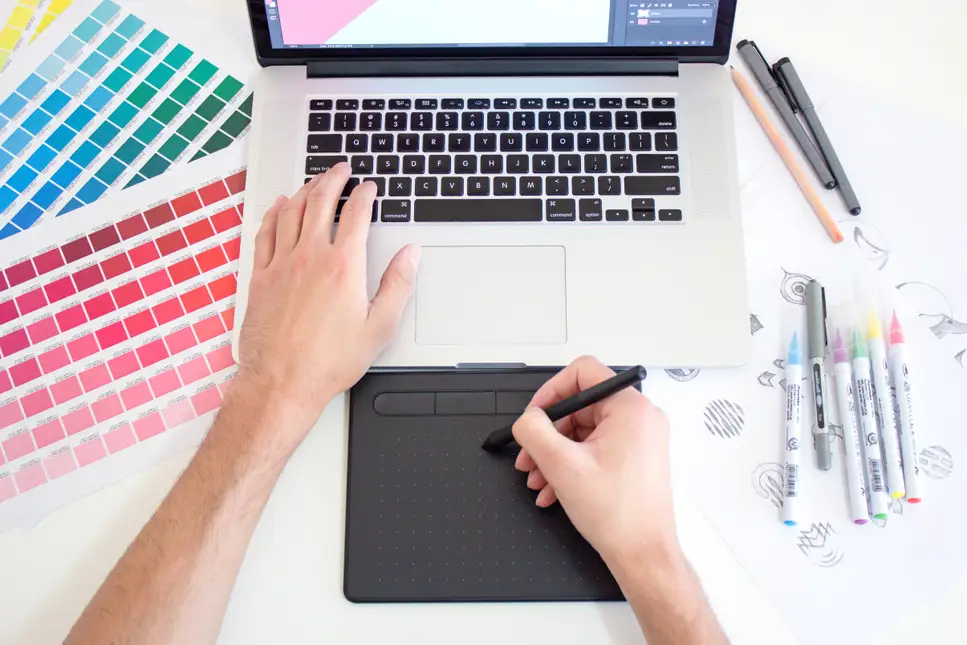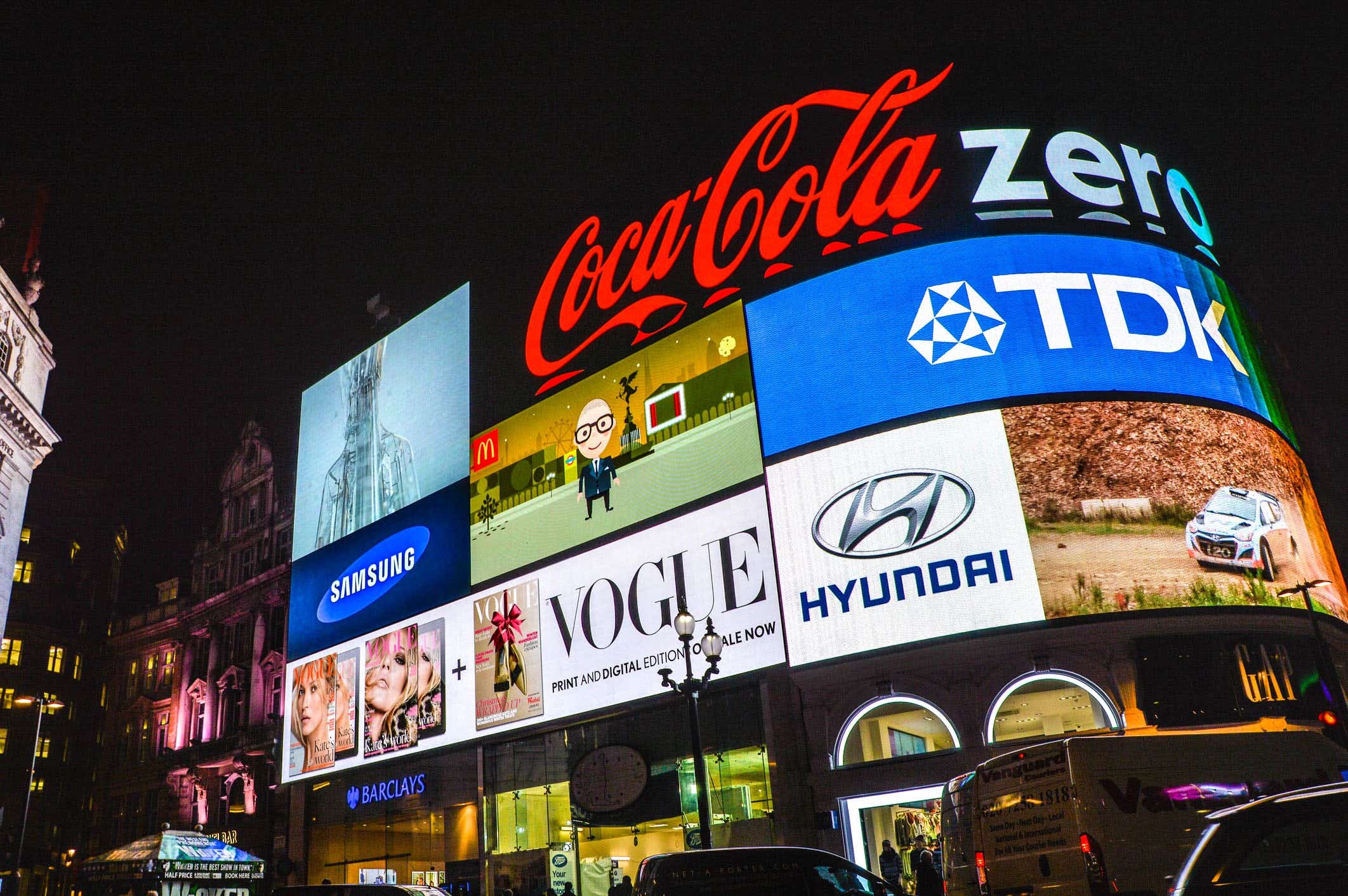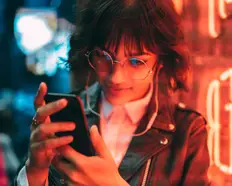Chatujte s Avou - vaší obchodní konzultantkou pro umělou inteligenci
Ahoj, jsem Ava, váš průvodce umělou inteligencí, který vám pomůže zlepšit vaše podnikání!
Ať už podnikáte, nebo sníte o tom, že ho založíte, jsem tu, abych vám pomohl proměnit vaši vizi ve skutečnost pomocí nezávislých pracovníků s umělou inteligencí. Podělte se o své obchodní cíle a společně vytvoříme projekt, na který se mohou přihlásit naši talentovaní freelanceři. Pojďme proměnit vaši vizi ve skutečnost!
Mám firmu
Začínám podnikat
Při odesílání konverzace na váš e-mail se něco pokazilo. Zkuste to později.
Konverzaci můžete uložit pouze jednou za hodinu. Zkuste to prosím později.
Váš rozhovor je příliš krátký. Pokračujte v konverzaci s Ava, abyste mohli ukládat.
Graphic Design
In this guide learn how to spot good graphic design from bad, how graphic design can benefit your business and how to find the best graphic designer.
11. 4. 2022 • 12 minut čtení
Aktualizováné dne 6. 3. 2023 uživatelem Joanna T.

Freelance journalist and copywriter
Kopírování do schránky se nezdařilo. Zkuste to znovu po upravení vašeho přístupu.
Zkopírováno do schránky.

Question | Answer |
|---|---|
Question | Answer |
Question | Answer |
Question | Answer |
Question | Answer |
Graphic design is a form of visual communication that combines creativity with purpose. Using visual elements such as typography, images, symbols and colours, graphic designers use their artistic talents and software mastery to convey a message or evoke an intended emotion.
For companies wanting to make a positive impression on the world and grow their customer base, employing the services of a professional graphic designer is nothing short of essential.
In this guide we’ll learn how to spot good graphic design from bad, how graphic design can benefit your business and, most importantly, how to find the best graphic designer for your needs.
Where can I find examples of graphic design?
Any time you read, watch, browse or buy something, you’re being influenced by graphic design – its intention is to affect how audiences perceive an item or experience. Everything from infographics and annual reports, to magazines, websites, logos and movie posters are all likely to have had a graphic designer’s touch – and yes, even the wrapper on your Big Mac.
Good graphic design vs bad graphic design
The tools and apps available to us all can fill even novice marketers and business owners with a false sense of confidence. How hard can it be? Some platforms make it as easy as choosing a template and tweaking it to suit a company’s needs. To the trained eye, however, DIY graphic design can be spotted in a nanosecond.
The average customer may not be able to pinpoint what exactly is wrong with a company’s logo, ad or website, but their first impression probably isn’t going to be a positive one. Whether the balance is off, the kerning inconsistent, or the colours don’t work harmoniously, DIY graphic design too often screams ‘amateur’. Instead of conveying a message of trust, quality and relatability, consumers can be left confused or unimpressed. Not exactly a dream outcome for a business wanting to grow its market share.
Good design, on the other hand, grabs the attention of an intended audience and communicates a lot of information quickly, with or without the use of words. Done well, a design tells its audience what a business does, what it stands for, and that they’re a business with something of value to offer.
In this age of diminishing attention spans, speedy scrolling, and content overload, the opportunity to connect with a potential customer needs to be immediate and bang on target. Standing out in a sea of competitors certainly isn’t easy, but DIY design definitely doesn’t help.
How can graphic design help my business stand out?
Combining artistic talent with software skills and knowledge of design principles, graphic designers create effective designs for clients in all kinds of industries. If a business is starting out, changing direction, or needs to rebrand to better represent its current status or offerings, graphic design plays a key role in helping a business communicate the right message. Defining a brand’s visual elements instantly reflects a company’s personality, mission and values, and even the products or services it sells or provides.
In defining a brand’s identity, a graphic designer works closely with a company to create a logo, colour palette, typography, style guide and more – right down to where the logo should sit on everything from a billboard or video to the CEO’s email signature. When all these elements are appealing and harmonious, a company can effectively communicate a clear, consistent and positive message to new and existing customers.
What are some examples of graphic design?
Let’s take a look at some of the ways graphic designers help businesses connect with their customers.
Logos and visual identity
Some of the world’s best-known logos are examples of innovative graphic design. Think of the McDonald’s golden arches, the Nike swish, the Starbucks siren (her nose isn’t quite symmetrical to make her a little more human). Picture the Apple logo (the bite makes it creative rather than cute, and stopped it looking like a cherry when shrunk down), the mirrored overlapping Cs in the clean and classy Chanel logo, or the Google logo (as much about the colours as it is the recognisable font).
Amazon’s clever logo has an arrow that leads from a to z, the FedEx logo incorporates an arrow to communicate speed and reliability, and Coca-Cola got it right with its logo when it was designed back in the early 1900s – the Spencarian script and trademarked flourishes manage to create a look both vintage and timeless.
A logo change is usually warranted when a company wants to modernise or connect with new audiences. Unlike, Coca-Cola, whose logo has changed very little, some brands tweak or completely re-imagine their logos every few years. Pepsi, Volkswagon, Shell and Audi are just some of the companies whose logos have changed dramatically over time – with the help of talented graphic designers.
Packaging
Next time you open your fridge, take a look inside with an eye for packaging design. A lot of thought has gone into the labels you see on that yoghurt tub, wine bottle or block of cheese. And be honest – how much did the packaging influence your purchasing decisions? Packaging can communicate whether a product is healthy, hip or high-end in a nanosecond.
Illustration is often used in combination with text and other design elements to give a product a particular look and feel – depending on the target market. Bright colours, cartoon characters and bold lettering appeal to kids, while formal script, muted tones and plenty of negative space can appeal to adults with refined taste. Other packaging can be designed to foster a sense of trust. A pack of face masks, for example, needs to be all about hospital-grade hygiene to successfully connect with consumers concerned about their health, so a simple, clinical design that highlights the protective benefits of the product inside is typically the way to go.
Website design
Living as we do in the digital age, most graphic designers are multi-skilled in digital as well as print design. Although UX (user experience) pros are worth their weight in gold when it comes to creating a user-friendly website, a graphic designer is vital when it comes to aesthetics. A UX expert will often work closely with a graphic designer to build a website big on both functionality and good looks. A graphic designer can also assist in creating such elements as e-newsletters, e-mail headers and landing pages with the same look and feel as the website. The more all the designed elements tie in together, the better customers (and potential customers) understand, recognise and respect the business.
Marketing and advertising
The work of a graphic designer needn’t stop once the logo, branding and website have been created and approved. Graphic designers also excel when it comes to creating assets for advertising campaigns and marketing strategies as a business endeavours to grow and reach new audiences. Social media announcements, posters, online ads, video ads, billboards and ads that stretch the length of a bus can all come to life with the help of a savvy graphic designer.
Print and digital publications
Print magazines may no longer rule the publishing industry, but there is still an abundance of them in every area from travel and lifestyle to niche trade publications. Most magazines now have an online presence, which requires graphic designers to marry the aesthetics of a longstanding print publication with a website, e-newsletter or even an e-commerce platform.
Multimedia
How we consume information is changing rapidly, and video is on the rise. Whether it’s a home page video, interactive infographic, moving banner ad or social media post that combines video, text and effects, graphic designers are increasingly being called on to help. Audience engagement has never been easier to measure, and the more professional a design, the easier it is to connect with an intended audience. As quickly as trends evolve, a graphic designer’s purpose remains the same: to create assets with visual appeal in order to communicate a brand’s message and evoke emotion from the audience.
Illustration
Some designers are especially skilled at illustration, which can enliven everything from restaurant menus and storefronts to packaging and book covers. Graphic designers who specialise in illustration will often have developed a personal style that aligns well with particular products or services.
Why finding the right graphic designer matters
Not all graphic designers are created equal. The best graphic designers don’t just have creative talent and tech smarts, they take the time to understand each client’s business and research how to create marketing assets that resonate with that client’s target audience. Find a trusted designer who really ‘gets’ a business and what it’s aiming to achieve, and their services can be used again and again with confidence.
Top graphic designers can advise their clients on strategies to reach new audiences, and collaborate readily with team members in marketing, sales or business development. Good designers ask a lot of questions to ensure they’re clear on the desired results, and are able to explain how they plan to meet the brief while adhering to trusted design principles. At the ideation stage, they may collate a series of images, colours and design elements on a moodboard, or visually explain a design’s direction with thumbnail sketches – particularly useful in the case of page or ad layouts involving text, images and headings.
Drafts, mockups or prototypes will be provided for review and revisions (usually a set number of revisions is included in the quoted cost) and the finished product delivered in a format that suits its purpose.
If, on the other hand, a designer promises lightning-fast work at a low, low price and rushes you through the brief (doing more talking than listening), you may well be disappointed with the end result. Like any successful business relationship, you and your designer need to communicate well and work together with relative ease.
Keep in mind that many graphic designers are specialists in one or more areas (web design, print publications or motion graphics, for example) while others are all-rounders who thrive on variety. If you find a great designer with whom you work well, but you need a design project completed outside of their area of expertise, it may be better to have more than one designer in your arsenal. This is one of the reasons it can be better to use freelancers rather than hiring an in-house designer, not to mention the lower cost.
Which tools do graphic designers use?
The software tools within the Adobe Creative Suite are what most graphic designers use to work their magic. InDesign, Illustrator and Photoshop are go-to tools during the design process. They may also use motion graphics and visual effects software, After Effects, and possibly Sketch, a vector-based digital design tool useful for the creation of apps and websites. Vector graphics can be resized as big as you like or without becoming any less sharp, and maintain their integrity on retina devices or high-resolution screens.
Most graphic designers are attracted to their profession because they have artistic talent, so pen and paper are other tools they rely on to rough out ideas and sketch icons or illustrations before turning to their digital toolkit. A stylus and tablet also make life easier for the adept designer.
Is graphic design easy?
Graphic design isn’t easy, and even the most experienced designers will tell you the work they do requires effort, forethought and dedication. Like most things, graphic design can be learned online and some designers master their craft entirely via free online tutorials. Most have studied graphic design for several years at university or training college, however, and build up their confidence and experience as junior designers before venturing out on their own.
What are the basic principles of graphic design?
The digital era may be upon us, but the trusted principles of graphic design still apply. Let’s take a look at the key principles graphic designers incorporate into their every successful creation.
Colour
Understanding colour theory is vital in order to shape how an audience feels when they view a design of any kind. The colours have to not only align with the brand and other elements of the design, but also work to elicit a desired response. Bright colours such as yellow tend to evoke happiness, while darker colours are more serious or formal. Where more than one colour is used, they need to work together in harmony. Jarring colours make for an inferior end result.
Typography
The words that appear in a design are usually provided to the designer, but it’s up to them to choose how they appear. A variety of typefaces may be chosen, based on the desired tone and message to be communicated. Sans-serif fonts, for example, may be chosen to match a happy design that evokes excitement. Serif fonts tend to be used in designs more serious in tone. Designers can also manipulate individual letters within a word to add feeling and style – most often in the case of one-of-a-kind logos. Letters and words also vary in size and weight (bold, light, medium) to suit the desired outcome.
Lines and shapes
To a graphic designer, a line isn’t just a line. Lines are used in just about every design, whether they divide a space, link two points, or focus a viewer’s attention by leading their eye from one part of the design to another. They can be curved, horizontal, vertical, dotted, hefty or barely there. Without lines, a design may never come together in a way that truly works. Shapes are simply lines formed into shapes, whether circles, squares or triangles. At least one shape is commonly woven into a design, adding both symmetry and interest.
Symmetry and balance
Humans love symmetry. We find it pleasing to the eye. In nature, symmetry is everywhere, from a butterfly’s wings to the leaves on a tree. In graphic design, symmetry is used to create balance, order and harmony. It helps us take in visual information quickly and easily, and makes it pleasurable to do so. Symmetry can be achieved by mirroring a design along a horizontal or vertical axis (as in butterfly wings), or rotated around a central point (think of petals around a flower or a whirlpool). Graphic designers also employ the rule of thirds, the Golden Ratio (found in nature) and other guidelines to help them create balance and flow.
Asymmetry in a design isn’t inherently bad, but it is used intentionally - to draw the eye to a particular component or word, to signify the presence of chaos, or to attract the attention of a passerby.
Contrast and harmony
Just as symmetry and balance appeal to our need for order, a sense of harmony in a design means every element has come together in a satisfying and visually appealing way. While a harmonious design is a goal worth pursuing, experienced designers know that too much harmony is rarely a good thing – and can even border on boring. Throwing in a curve ball in the form of a contrasting element that stands out for its colour, form or position, can challenge the viewer to make sense of a design, and capture their attention for longer than a see-it-and-forget-it design ever would. Like asymmetry, contrast needs to be used with restraint and clear intention.
Negative space
Graphic design isn’t all about what goes in, it’s also what’s left out. Negative space, also know as empty or white space, gives design elements room to breathe, allows the eye to be drawn to a particular element, and can make words easier to take in. Too little negative space and a design can be so overwhelming and visually cluttered that the viewer doesn’t know where to look or, worse still, finds it so unappealing that they look away!
Texture and scale
Plain colour is one thing, but textured colour quite another. Think of the texture of water droplets, velvet or concrete. Added texture judiciously to a design can add dimension and interest, and complement a brand’s aesthetic. Texture or pattern can be a subtle background addition, but dominate a design when used on a larger scale. Scale can also create visual hierarchy and direct attention from the most important information to the finer details. In the case of an event, the large heading tells the viewer what the event is, the sub-heading explains a little more about it, and the body text details the event’s date, venue and other information.
How much does it cost to hire a graphic designer?
Now that you know the benefits of hiring a graphic designer, you may be wondering how much they charge, how they charge, and how much the cost can vary from one designer to another. Freelancers charge anywhere from $5 to $100 per hour, and the total cost will depend on how many assets are to be created, how complex they are, and the range of skills needed to do the job. Some designers charge on a per-project basis, giving you a greater level of certainty when it comes to your budget. Location can affect how much a designer charges (designers in developing countries typically charge less), along with their level of experience.
How do I hire a graphic designer?
Whether you need a logo designed or an entire website, freelancer.com is the place to find a high-calibre designer that suits your needs and budget. Companies ranging from start-ups to blue-chips rely on freelancer.com to create everything from annual reports, apps and advertisements to an entire suite of assets that define their identity in the market.
The first step is to post a job on freelancer.com, outlining what you need designed. Your first bid is likely to appear in seconds, and you’ll quickly have an array of freelancers from which to make your selection. Reading reviews and taking a look at their previous work makes the choosing decidedly easier.
You can communicate with your chosen designer via the chat function on freelancer.com, or any other way you like, and monitor their progress. Only once you’re completely satisfied with the end result do you pay the designer for their work.
In the case of a one-off design such as a logo, an alternative approach is to run a contest on freelancer.com. Numerous designers will come up with a logo to your brief, and you simply pay for the one you like best. Easy!
Sdělte nám své požadavky
Zadejte název vašeho projektu
Podobné příběhy
Spojte se s některým z našich technických kopilotů, aby vám pomohl s vaším projektem
Doporučené články přesně pro vás

Here's what you can expect to pay a designer for tasks like logo creation to website design - whether it's an employee, an agency or a freelancer.
8 min read

Links to brand guidelines and PDFs that 103 of the world’s biggest brands use for promoting clear, consistent and recognizable brand identities.
30 min read

The hidden meaning behind 40 of the coolest logo designs from the world's biggest brands.
7 min read

Corporations may have millions to spend on branding and logos, but these 10 small businesses prove you can get a great logo on a budget
6 min read
Díky! Poslali jsme vám e-mailem odkaz pro získání kreditu zdarma.
Při odesílání e-mailu se něco pokazilo. Zkuste to prosím znovu.
Načítání náhledu
Bylo uděleno povolení ke geolokaci.
Vaše doba přihlášení vypršela a byli jste odhlášeni. Přihlaste se znovu.






